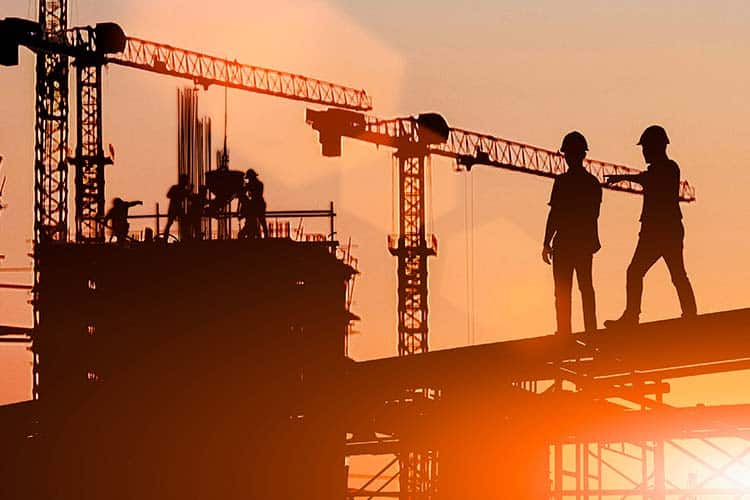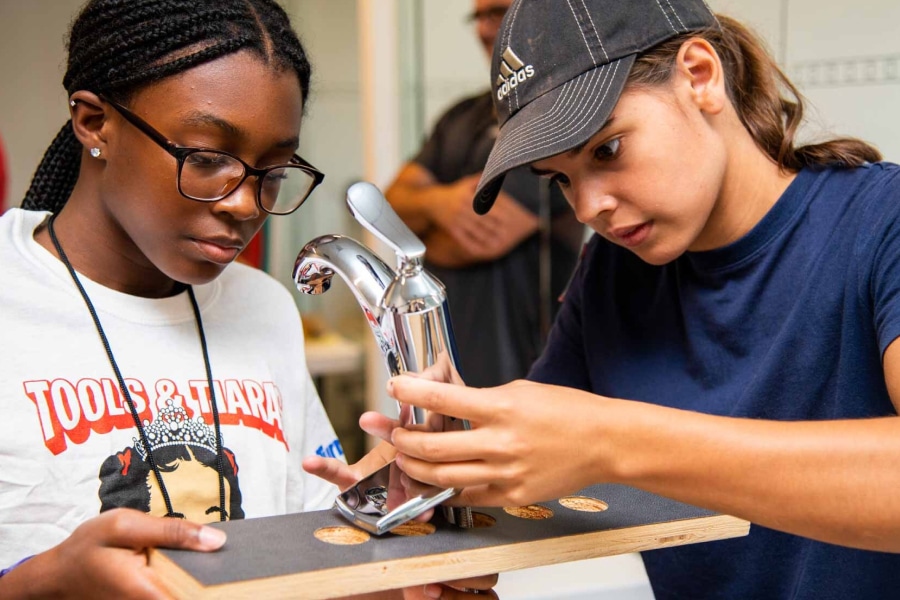For nearly a decade, the construction industry in the United States has struggled with a labor shortage, pressuring Congress year after year to make it easier for contractors to hire temporary laborers from abroad. Now, as the labor crisis stretches into its ninth year, Congress has expanded existing temporary visa programs and may consider new legislation to create more flexible visa programs. But experts say that temporary visa systems are not in the best interest of workers, American or otherwise, or of construction companies themselves.
In the decade since the labor shortage began, when skilled workers fled the industry for other job prospects during the recession, the crisis has not let up. In 2018, 91% of contractors, builders, and construction managers reported having a hard time finding skilled laborers in a survey—the most since the peak of the housing boom in 2007. This year, nearly 80% say they can’t fill positions.
Construction is one of several industries, along with landscaping, forestry, hospitality and others that rely on seasonal employees, that often turn to the H-2B visa program—the federal visa program that allows employers to bring foreign workers to the U.S. to fill seasonal, low-wage, non-agricultural jobs.
The program is capped at 66,000 visas, but this year, the Trump administration increased the number to 96,000—the most since President George W. Bush upped the cap to 130,000 at the height of the pre-recession housing boom. Despite the polarized rhetoric surround immigration reform on Capitol Hill, there’s broad, bipartisan support for expanding H-2B visas in Congress, which has approved of hikes in the number of H-2B visas on an annual basis since 2016—usually by inserting riders in appropriations legislation, rather than drafting new laws or amending the existing ones.
But immigration experts note that the temporary visa program isn’t set up to uphold labor standards, and can leave migrant workers vulnerable to exploitation and American laborers frozen out of jobs they’re qualified to fill.
“The way the program is set up, it mostly benefits employers,” says Daniel Costa, the director of immigration law and policy research at the Economic Policy Institute, a left-leaning think tank. To hire H-2B workers, employers must apply with the Department of Labor and show that they made an effort to fill jobs with U.S. workers first—by posting ads or contacting state workforce agencies, for example.
But it’s easy to get around those requirements. President Trump, for example, has frequently said that his properties have had to turn to foreign labor to fill seasonal jobs, but a recent Buzzfeed investigation revealed that dozens of Americans applied to jobs at his resort and were not hired. Meanwhile, the Department of Labor approved of hundreds of requests from Trump properties to fill seasonal roles with low-wage workers on temporary visas.
There are many reasons why employers might prefer H2B laborers over American ones. They can’t quit and start at a competitor that pays more, and they tend to be more productive employees because their families are back home—which means they rarely miss work to take their kids to the doctor or to go on a vacation, for example.
Across the board, H-2B workers are paid less than U.S. laborers for the same job, and that gap is widest for the construction industry, where H-2B workers make more than $4 less per hour than American workers, according to recent research from EPI. Often, H-2B workers make as little as undocumented ones, according to Costa.
If foreign workers complain, they risk being fired and sent home, which can make it harder to return to the U.S. on another work visa in the future.
There are other proposals to overhaul the immigration system that go beyond the H-2B visa program. Representative Lloyd Smucker (R-Pennsylvania) introduced the “Workforce for an Expanding Economy Act” this year, a bill that would create a new visa system that would allow employers to hire foreign workers for the duration of pre-approved construction projects. The bill has yet to make it out of committee, but it suffers from the same major flaw as the H-2B program: It only provides a temporary visa—which Costa says keeps workers “quasi-indentured” to the companies they work for.
“There’s a million ways you could structure [a better program], but the key is to not have people in a temporary status,” Costa says. “Employers are always talking about how great their H-2B workers are… they should be able to earn the ability to petition for themselves to become permanent residents.”
The government currently sets aside some 10,000 permanent, employment-based visas for low-skilled or unskilled workers (or those without a college degree). The construction industry is not currently lobbying for Congress to increase those numbers, but creating more permanent opportunities for foreign workers would benefit employers as well, by helping to create a more stable and reliable workforce.











